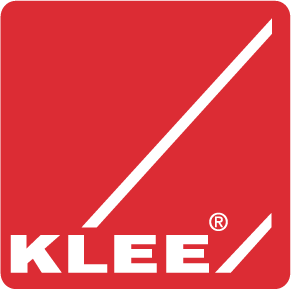Information about castors and wheels
We supply the complete range of castors and wheels from Elesa+Ganter. The program includes a wide range of industrial wheels suitable for manual or mechanical handling of pallet lifts, rolling tables, and equipment.
The wheels have different properties in relation to the surface they must run and the load requirements. The program includes medium, heavy and extra heavy loads.
The strength of the Elesa+Ganter series of castors and wheels is the great variety that results from the manufacturing method and the material of the various components. As a result, a variety of versatile wheels with specific characteristics are offered.
Where are industrial wheels used?
In all industrial applications where there is a need for movement according to the examples above.
Which wheel should you choose?
When you want to set a device in motion, you must first overcome the starting resistance. The maneuverability of the unit is affected by the rolling and turning resistance. The resistance depends on many factors, including:
- Load
- Wheel diameter
- Wheel material
- Wheel bearing
- The condition of the floor/surface
The type and number of wheels and how the wheels are attached affect maneuverability. For example a unit that only moves in a straight line can only be equipped with fixed wheels. If the wheel needs to be turned a combination of fixed wheels and swivel wheels is ideal. If there is a need to be able to lock the wheels, then wheels with a locking function must be used. On a typical shopping cart in the supermarket with four wheels the optimal combination migth be two fixed wheels and two swivel wheels with brakes.
There are a number of things to considerate when choosing a wheel for your application.
1. Surface
Regarding choice of wheels, it does matter what surface the wheels are to be used on. Should they drive on asphalt, cement, wooden floors etc. or a combination? As a starting point, this rule applies: soft floors = hard wheels and vice versa.
2. External circumstances
Are there external circumstances causing stricter requirements for your wheels? It could be temperature, places with many chemicals, high humidity or static electricity.
3. Load and speed
How much weight should your wheels be able to handle? How fast must the wheel be able to move?
Wheel structure
The outer ring is a coating or tread which comes into contact with the surface on which the wheel must run. Just like tires on a car, you want the least possible rolling resistance in combination with the best possible grip. Smooth tread has low friction/rolling resistance, but the surface determines whether a smooth surface is optimal, or whether a surface with a pattern is preferable.
The tread forms the outer ring of the wheel and can be made of several types of materials that define hardness and wear resistance. The tread is typically glued or vulcanized to the wheel rim.
The wheel rim is the middle piece between the tread and the hub, around which the wheel rolls. Available as a single rim or as a double rim (twin wheels) for high loads or where there is a need to distribute the pressure over a larger area.
Bore and hub are the parts that allow the wheel to turn around a shaft and which help to determine how easily the wheel runs. Using roller bearings can help create smooth running.
Types and materials
The wheels are produced in a number of different materials that all have different properties, and can be combined for a fixed or swivel plate bracket, and with or without brakes. Below is a selection of the materials from which the castors and wheels from Elesa+Ganter are made, including the advantage of using the different materials.
Polyurethane (PU)
Polyurethane (PU) is a gentle coating for the floor/surface. Polyurethane is elastic, durable and extremely resistant to many substances. In addition, treads/running surfaces made of PU stand out by having a low rolling resistance and high driving comfort. However, polyurethane is not the best solution at extremely high or low temperatures. In such cases, the bearing capacity may deteriorate. Here, you must instead use wheels in duroplast, which can withstand high temperatures. Polyurethane wheels are also available in antistatic ESD versions with electrostatic discharge.
Example E+G RE.F2 polyurethane wheel

Technopolymer
Technopolymer is a plastic material with high thermal and mechanical performance, which in several contexts can be an alternative to aluminium, base metals and other alloys. Polyesters, reinforced polyamides, acetal resins, polyphenylsulfones, polyether ketones, polyimides, polyamideimides and polyetherimides are all types of technopolymers.
The main properties of technopolymers are high elasticity, high tensile strength and resistance to high temperatures.
Elesa+Ganters offers the following wheels in technopolymer:
E+G RE-F8 wheels in polyamide-based technopolymer (PA), which makes it resistant to solvents, oil and other chemicals.

Rubber
Rubber treads have in common that they are usually very gentle on the surface on which they have to drive and are at the same time vibration-damping, as the rubber absorbs some of the vibrations that occur when driving. Rubber wheels have a low turning and rolling resistance, which is why driving comfort is high. Another advantage is the material's resistance to many aggressive substances.
Example E+G RE.E2 vulcanized rubber wheel

Duroplast
Duroplast is a composite material of thermosetting plastic. Wheels in Duroplast are particularly suitable for places with high temperatures.
Example E+G RE-F7, which is precisely a good example of what is called a heat-resistant wheel, which can handle temperatures up to 300 degrees C.

Need help?
If you do not find the right solution for your application on this page, or if you need guidance, you are always welcome to contact us.
